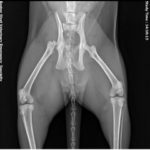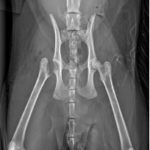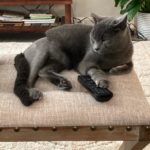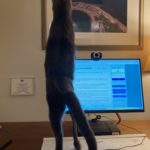Case Study: Femoral Head Ostectomy for a Cat Who Jumped from a Tree
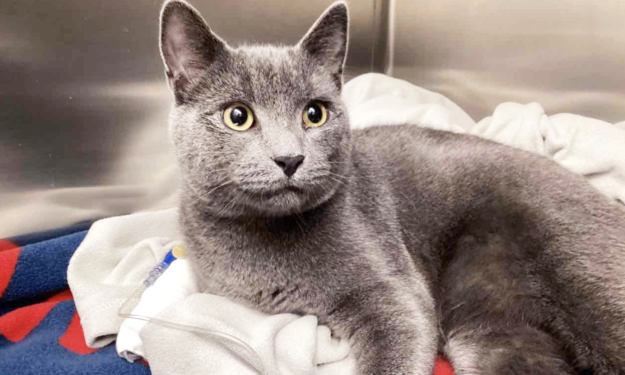
Presentation & History
Robbie is an 8-month-old DSH kitten who was seen at Boston West Veterinary Emergency and Specialty on a Sunday for being non-weight bearing after jumping from a tree. Robbie was walking with his mom on his leash when he saw a squirrel and chased him halfway up a tree. After jumping down about 4 feet, he was noted to be painful and not putting any weight on his back leg.
He came in through the emergency room and was evaluated by Dr. Lauren Melle.
Physical Examination & Diagnosis
On exam, Robbie had a high heart rate due to stress and discomfort. He was painful when touching his back right leg near his hip. Robbie also would not put any weight on that leg.
Robbie was given a pain medication and an x-ray confirmed suspicions of a fracture at the top of his femur (thigh bone) where it sits in the hip socket. The femoral head and neck make up the top of the femur that sits in the hip joint.
This type of fracture is called a capital physeal fracture. This type of fracture is over represented in young male cats. In young neutered male cats, this type of fracture can happen spontaneously or with trauma (in the case of Robbie). Robbie had bloodwork performed to evaluate organ function to prepare for anesthesia/surgery.
Treatment: The Femoral Head Ostectomy
The recommended treatment for Robbie was an FHO (femoral head ostectomy.) This is where the fractured piece of bone is removed, allowing the opportunity for the joint to continue to function. Robbie was hospitalized overnight on pain medication and transferred to our surgery service the following morning for surgery.
Robbie had surgery the following day. He was kept overnight after surgery for pain control and close monitoring after anesthesia.
Outcome
The following morning Robbie was eating, purring, and even putting weight on the surgery leg! He went home with pain medication and instructions for follow-up.
He was rechecked about 2 weeks after and was already progressing. He is able to walk normally similar to prior to surgery. His owner has still been limiting his activity with jumping, but can start incorporating more activity as he heals.
One thing is for sure, he will be avoiding tree climbing in the future!
Notes About Femoral Head Ostectomy in Veterinary Patients
In general, cats who undergo an FHO do very well. Use of the leg post-operatively is very important otherwise stiff scar tissue can form limiting the mobility of the joint. Activity is encouraged about 1 week after surgery and full healing about 3 months after surgery.
